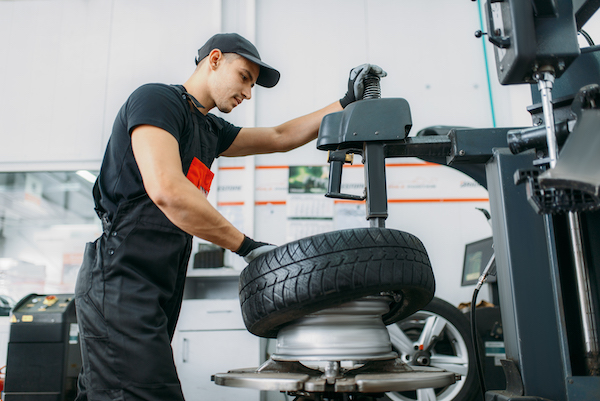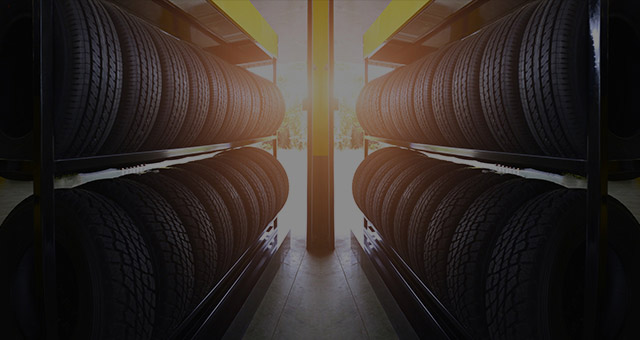Tire Solution: Understanding Tire Pressure Surveillance Equipments
Comprehending Tire Stress Surveillance Equipments (TPMS) is an essential element of keeping optimum automobile efficiency and safety and security on the road. With improvements in automobile technology, TPMS has ended up being a standard function in contemporary automobiles, providing real-time info on tire pressure levels.

Value of TPMS
The significance of Tire Stress Tracking Systems (TPMS) lies in their capacity to improve automobile safety and performance with real-time surveillance of tire pressure degrees. Preserving the correct tire stress is vital for ensuring optimal handling, stopping, and overall safety of a lorry. TPMS offers motorists with immediate comments on any kind of overinflated or underinflated tires, enabling prompt modifications to be made.
Parts of TPMS
Comprising numerous important elements, a Tire Pressure Tracking System (TPMS) functions as an innovative safety and security function in modern automobiles. The major elements of a TPMS consist of sensors, a control component, and a caution indication. Sensors are commonly situated in the tire shutoff stem or connected to the wheel setting up, where they gauge tire stress and send information to the control component. If it detects dramatically reduced pressure in any of the tires, the control module procedures this info and causes a caution. The caution indication, usually a symbol on the control panel, notifies the motorist to inspect the damaged tire or tires. Some advanced TPMS versions additionally show the actual tire stress readings for every tire, providing vehicle drivers with real-time details to ensure optimum tire performance and safety. By monitoring tire stress continuously, TPMS aids stop accidents, minimizes tire wear, and enhances fuel efficiency, making it a vital component for automobile security and efficiency.
Kinds Of TPMS

On the various other hand, indirect TPMS relies upon the automobile's wheel rate sensing units to keep track of tire pressure. This system detects underinflation by comparing the rotational speeds of the wheels. Indirect TPMS is much less pricey than straight TPMS, as it makes use of existing sensing units within the car.
While direct TPMS uses a lot more exact analyses, indirect TPMS is easier in style and typically requires less upkeep. Both systems have their advantages and limitations, and the option between them commonly relies on variables such as cost, car make, and personal choice. Comprehending the differences between these two types of TPMS can help vehicle proprietors make educated decisions regarding tire upkeep and safety and security.
TPMS Upkeep Tips
Efficient maintenance of TPMS is important for ensuring optimal performance and security of your car. Frequently checking the TPMS sensors for any kind use this link of damages or rust is essential. Make certain that the sensing units are tidy and totally free from debris that could conflict with their functioning. Furthermore, it is recommended to check the sensing unit batteries regularly and change them as needed to assure precise analyses. Conduct routine examine the tire stress levels and contrast find more info them with the TPMS readings to guarantee they are regular. If there are any type of inconsistencies, alter the system following the maker's guidelines. Throughout tire rotation or replacement, make sure that the TPMS elements are handled carefully to prevent any type of potential damage. If the TPMS alerting light brightens on the dashboard, address the problem promptly by checking the tire pressures and the total system for any kind of mistakes. By sticking to these upkeep pointers, you can lengthen the life-span of your TPMS and boost the safety of your driving experience.
Advantages of Appropriate Tire Pressure
Keeping correct tire pressure, as emphasized in TPMS Maintenance Tips, is crucial for gaining the various advantages linked with optimum tire stress levels. Additionally, appropriate tire pressure makes certain even tire wear, prolonging the life-span of the tires and promoting safer driving conditions. In verdict, the advantages of proper tire pressure go beyond just tire durability; they incorporate enhanced gas effectiveness, enhanced safety, better lorry efficiency, and general driving comfort.
Verdict
To conclude, recognizing tire pressure monitoring systems (TPMS) is vital for preserving optimal tire pressure and making certain lorry security. By identifying the importance of TPMS, being acquainted with its elements, understanding the various types readily available, adhering to proper maintenance ideas, and recognizing the advantages of keeping proper tire stress, motorists can improve their driving experience and lengthen the life expectancy of their tires. Proper tire pressure is key to efficient and safe automobile operation.

Comments on “Get Professional Tire Solutions at Tire Shop Morris: Satisfaction Guaranteed”